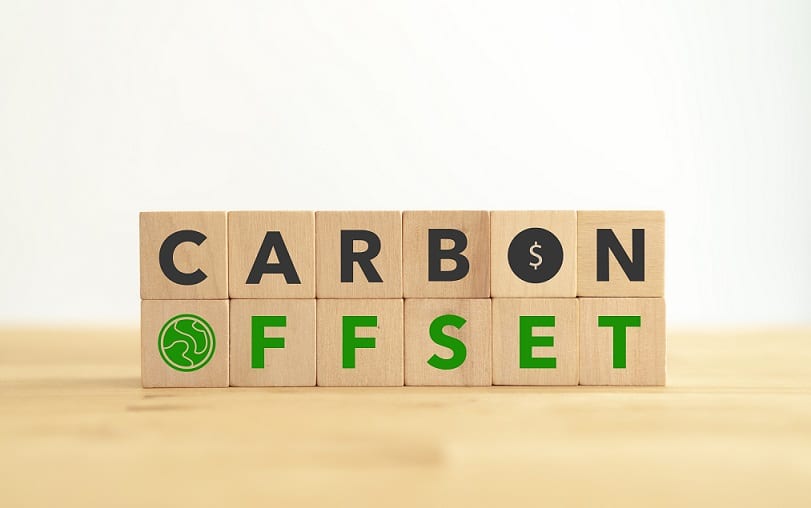
The carbon credit concept explained
So, what are carbon credits? They’re elements of a “cap-and-trade” scheme and authorize the owner to emit a specific quantity of carbon dioxide (or other greenhouse gases). In other words, a company that pays for carbon credits buys its right to emit carbon or other greenhouse gases.
Every carbon credit is the equivalent of one ton of carbon dioxide or another greenhouse gas’ equivalent that a company can release. It’s a way to compensate for gas emissions and incentivize the entities that invest in eco-friendly projects and limit their carbon footprint.
Let’s break down the concept. In line with the Paris Agreement of 2015, many governments limit how many tons of emissions specific industries — such as oil, transportation, energy, or waste management — can emit in the compliance market. If an oil business, for example, exceeds the permitted emissions limit, it must purchase additional credits or use stored ones to remain inside the boundaries.
On the other hand, a company can save or sell the credits if it stays within that cap — that’s where the name cap-and-trade comes from. Moreover, projects that cut, eliminate, or collect emissions are eligible to earn carbon credits, which can further be sold on the compliance carbon market. The market value of global compliance carbon credits traded in 2021was estimated at $851 billion.
Two different types of carbon credits: Carbon credits vs. Carbon offsets
Carbon credits and carbon offsets are instruments meant to control emissions and protect the environment.
Carbon credits (certified emissions reductions — CER) follow a regulatory framework that aims at the project’s emissions. They’re issued and regulated by governmental schemes.
Carbon offsets (voluntary emission reductions — VER) are the proof a company receives when it removes units of carbon from the atmosphere as part of routine business operations. The organization can sell these to other businesses that need to lower their carbon footprint. Transactions occur on the voluntary carbon market, as VERs are independent and not regulated by any government.
Here’s how these two measures impact the environment:
- Carbon offset: one tonne of carbon dioxide or another greenhouse gas’ equivalent is removed from the atmosphere.
- Carbon credit: one tonne of carbon dioxide or another greenhouse gas’ equivalent will no longer be released into the atmosphere.
Credits and offsets have two things in common:
- Carbon credits and offsets equal one tonne of carbon dioxide emissions each.
- When a carbon credit or offset is used (the company has emitted one tonne of carbon dioxide), that credit is “retired,” so no one can sell it or use it again.
Even though the two terms are occasionally used as synonyms, it’s important to remember the difference between voluntary offsets and regulatory compliance credits.

Why do people use carbon credits?
Companies in specific industries must use carbon credits by law. With many new environmental regulations in place, many of these organizations are under more pressure than ever to find ways to lower their carbon footprint or extend their cap to stay competitive. However, the number of carbon credits allotted to them each year depends on the company’s size and how effectively it operates in comparison to industry benchmarks, so they’re not always enough.
Despite technological advancements, some businesses have a long way to go before significantly decreasing their emissions. Buying credits on the carbon markets can help them to continue their activity.
At the same time, carbon credits provide additional income for organizations that are more successful in minimizing their environmental impact.
The pros and cons of carbon credits and offsets
Advantages:
- Carbon offsets can impact climate change and protect the environment.
- Carbon offsets help with building awareness around greenhouse gas emissions and their impact on global warming.
- Carbon credits and offsets incentivize companies to invest in new technology and provide environment-friendly products and services.
- They both accelerate the transition to green energy and environmentally friendly practices.
- Carbon credits give businesses a simple means of compensating for damaging environmental effects.
- The social costs of greenhouse gas emissions are supported by those responsible for them.
Disadvantages:
- Carbon credits alone can’t stop or erase the carbon footprint that has already been made.
- Some organizations might believe it’s okay to emit significant amounts of carbon if they’re willing to pay for it.
- Companies that need carbon credits could raise product prices to counter reduced business profits.
- More companies are likely to fail as they join the quest to become carbon-neutral.
- Various industries have different levels of carbon offsetting efficiency, and carbon offsets are often insufficient.
- Certification fees don’t come cheap.
What you need to know before using carbon credits
Companies have several options to invest in carbon credits, of which the most popular are:
- Stock investments
- Exchange-traded funds
- Auction systems overseen by governments — such as the European Union Emissions Trading System (EUETS), the European Energy Exchange (EEX), or the California Air Resources Board (CARB) Trading Program.
Currently, 17 carbon trading systems operate in 35 countries and employ a cap-and-trade system that permits purchasing a set number of carbon credits. Overall, the mechanisms are set up to ensure that carbon emissions decrease yearly.
How much do carbon credits cost? A carbon credit’s value depends on market dynamics, costs of implementation, or the value the project generates. The size and location of the project can also impact pricing.
According to the World Bank, the reported internal carbon prices can vary from $0.8 to $6,000 for a tonne of carbon dioxide equivalent. The bulk, however, continues to trade below $50–100/tCO2e — a price that top economists claim is the minimum required to achieve the Paris Agreement’s temperature goals.
Examples of companies using carbon credits
- In 2021, Delta Air Lines purchased 12 million carbon credits for $137 million.
- Google (Alphabet) uses “research, collaboration, standards, and due diligence” to invest in quality offset that provides long-term global benefit.
- In 2021, Salesforce achieved net-zero across its value chain and 100% renewable energy with carbon credits.
- In 2021, Microsoft bought 1.3 million carbon offsets.
- In 2020, Amazon announced a $10 million investment to remove carbon dioxide from the atmosphere.
- Netflix, too, bought 1.5 million carbon credits in 2021.

Alternative ways to reduce your carbon emissions
No matter how big or small, organizations can substantially impact how they conduct business and reduce their carbon footprint even without investing in carbon credits. Here are some ways to lessen the carbon impact of your business:
- Switch all of the lightings to more energy-efficient options like LED. When feasible, make sure to use as much natural light as possible.
- Keep your data centers at 23°C — the ideal temperature for energy savings without running the danger of overheating.
- Implement temperature controls to optimize heating and cooling systems and use a building management system that can be installed to prevent energy waste caused by competing heating and cooling systems.
- Reduce printing and digitize as much as possible to reduce paper usage.
- Switch to green energy from alternative sources, such as solar panels or biofuels.
- Invest in an on-site organic waste treatment solution that produces renewable energy.

Carbon credits FAQs
- What companies are eligible for carbon credits?
All companies can buy carbon credits and offsets on the compliance and voluntary carbon markets to meet their climate strategy goals. A company’s annual residual emissions should be the criterion used to decide the number of offsets needed, emphasizing reductions first and then offsetting residual emissions. Lastly, offsets must be a component of a thorough, science-based approach to reaching carbon footprint goals, not an excuse to carry on operations as usual.
- What is the value of one carbon credit?
The market supply and demand levels determine how much credit is priced. Prices vary from a few cents to several hundred dollars per metric ton of carbon dioxide emissions due to regional variations in supply and demand. Reforestation and tech-based projects can have significantly higher prices.
- How can we measure carbon credits?
Qualified experts often calculate an organization’s emissions for companies with complex business processes and operations. As a general rule, every action that generates greenhouse gas emissions must have an associated emission factor — for example, for every liter of diesel fuel used, engines emit 2.7 kg of CO2.
Final Thoughts
Overall, carbon credits are good for society and can support businesses that aim to reduce their carbon footprints and achieve zero-emissions goals. However, it might become difficult for a typical investor to use them as tools to generate income. That’s because carbon credits and carbon offsets must fight climate change, not drive profits.
Smaller companies interested in sustainability and cutting down carbon emissions can gain more from local alternatives and on-premises measures that don’t involve financial instruments but are still highly effective solutions to reduce a company’s carbon footprint.






